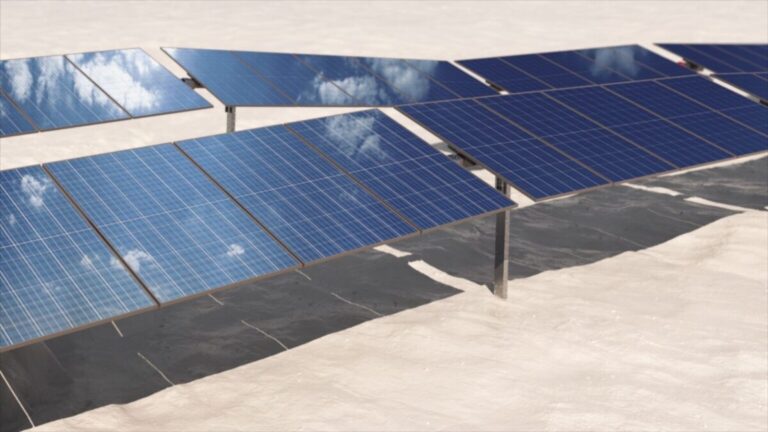The new tracker incorporates gimbal joint technology along the main axis of rotation, allowing each section of the torsion tube to have a different inclination or inclination, while maintaining continuity of rotation and rotation of the PV modules.
Axial, a Spanish company specialized in the design, production and operation of solar trackers for utility-scale PV projects, has launched the AxialTracker SlopeSync, a new dual-row tracker that incorporates gimbal connection technology along the main axis of rotation “to create adaptability and total synchronization on all areas possible, even the most complex,” the company said.
This technology ensures that within the same tracker, each part of the torsion tube can have a different slope or inclination, but the continuity of the rotation and rotation of the PV modules is maintained at all times. In addition, the system is designed in such a way that adaptation to the terrain does not imply the deformation of any profile or part of the structure, and avoids the appearance of induced stresses, thus achieving a longer service life of the tracker.
“The AxialTracker SlopeSync revolutionizes the solar tracker market by eliminating the need to align pillars because it eliminates the concept of a straight axis of rotation,” the company said. pv magazine. “Each part of the torsion tube between two successive pillars can have a different slope thanks to the cardan joints, so that the pillars of a follower can have different heights depending on the irregularities of the terrain.”
Among its technical features, Axial highlights driving tolerances of up to +-400 MM in both directions (NS and EW), “the highest on the market,” as well as “the total synchronization with irregular terrain.” The distance to the ground is a maximum of 1 m (55°) and supports irregularities in the ground up to +- 400 mm between successive pillars.
The torsion tube connections are pre-assembled and do not require pillar alignment, improving installation proportions. In addition, it avoids deformations and stresses caused in the structure and the CV technology allows deviations of up to 30 degrees, allowing greater use of the route.
“The launch of the AxialTracker 2TT revolutionized the market as it pioneered the use of the multi-point locking system,” the company said. “The AxialTracker Twin maintains this line of high-tech developments and offers a dual-row solar tracker using CV-kinetic technology. Thanks to this system, the power to produce the movement of both trackers is generated by a single motor, but the stresses due to wind loads are distributed between both structures via independent gearboxes. With this extensive experience in technological innovation behind it, Axial has taken another step forward with the launch of the 4th generation of trackers, promoting the future of solar trackers with its AxialTracker SlopeSync.”
Axial adds that “unlike other adjustment systems based on torsion tubes that deform according to the orography and impose stresses on the structure, Axial is committed to avoiding the occurrence of cyclic overstresses and thus reducing the risk of undesirable long-term phenomena, such as fatigue in the structure , to eliminate. the structural profiles or the amplification of deformations that could negatively affect the optimization of tracker production.”
SlopeSync also reduces the need for earthworks, minimizing costs and improving overall project execution times.
Axial will present the new tracker from June 19 to 21 at Intersolar in Munich on stand A6.320.
This content is copyrighted and may not be reused. If you would like to collaborate with us and reuse some of our content, please contact: editors@pv-magazine.com.


